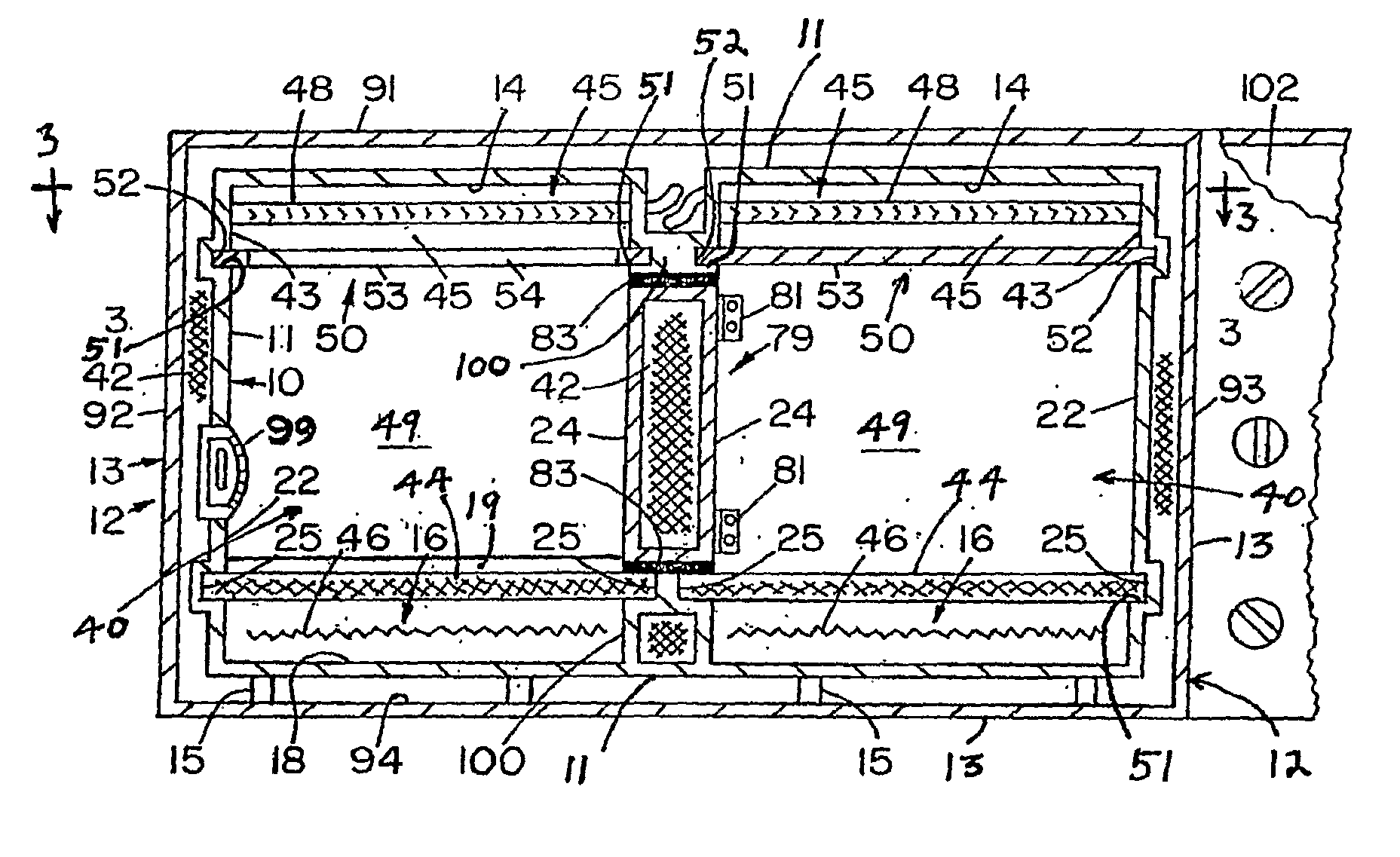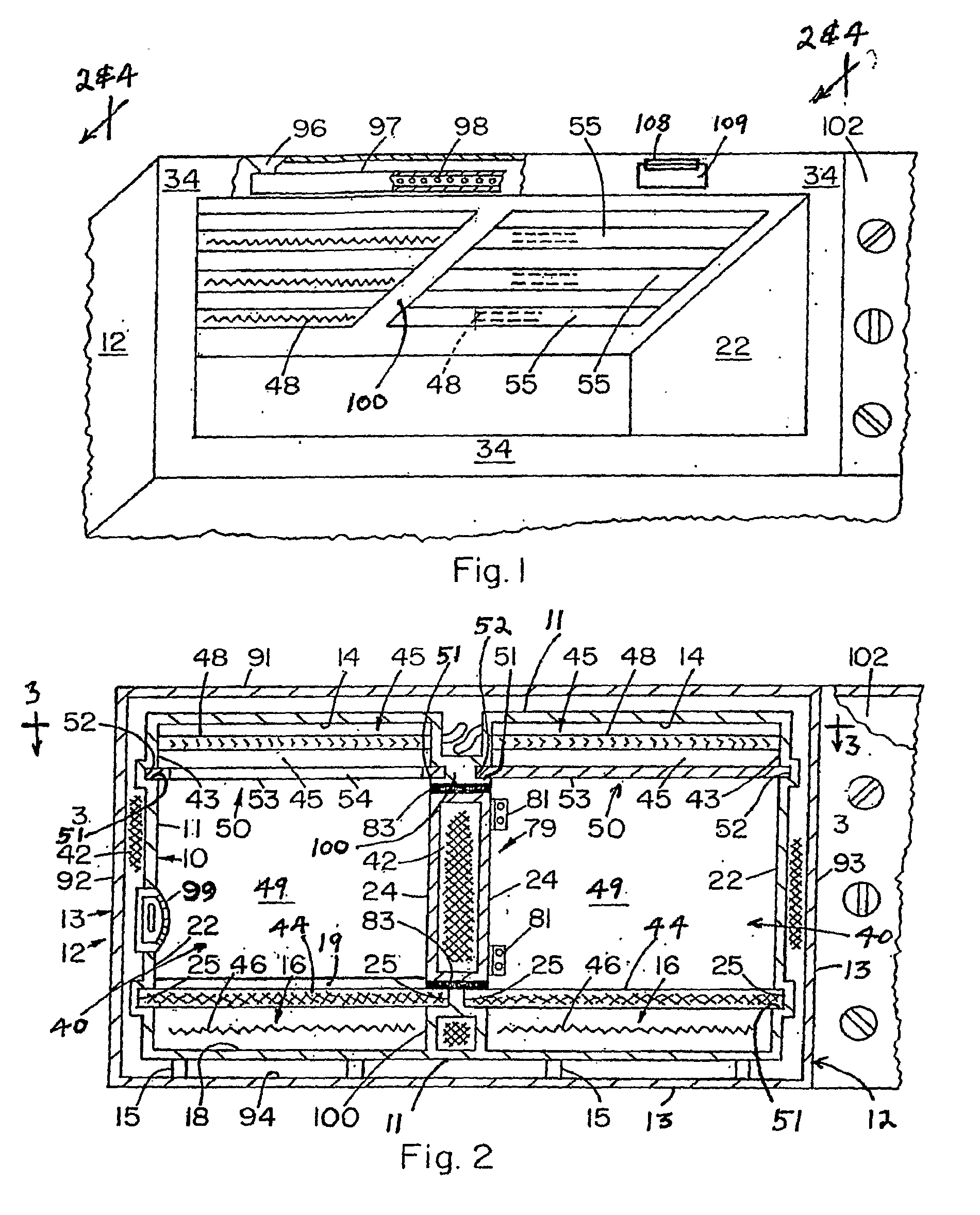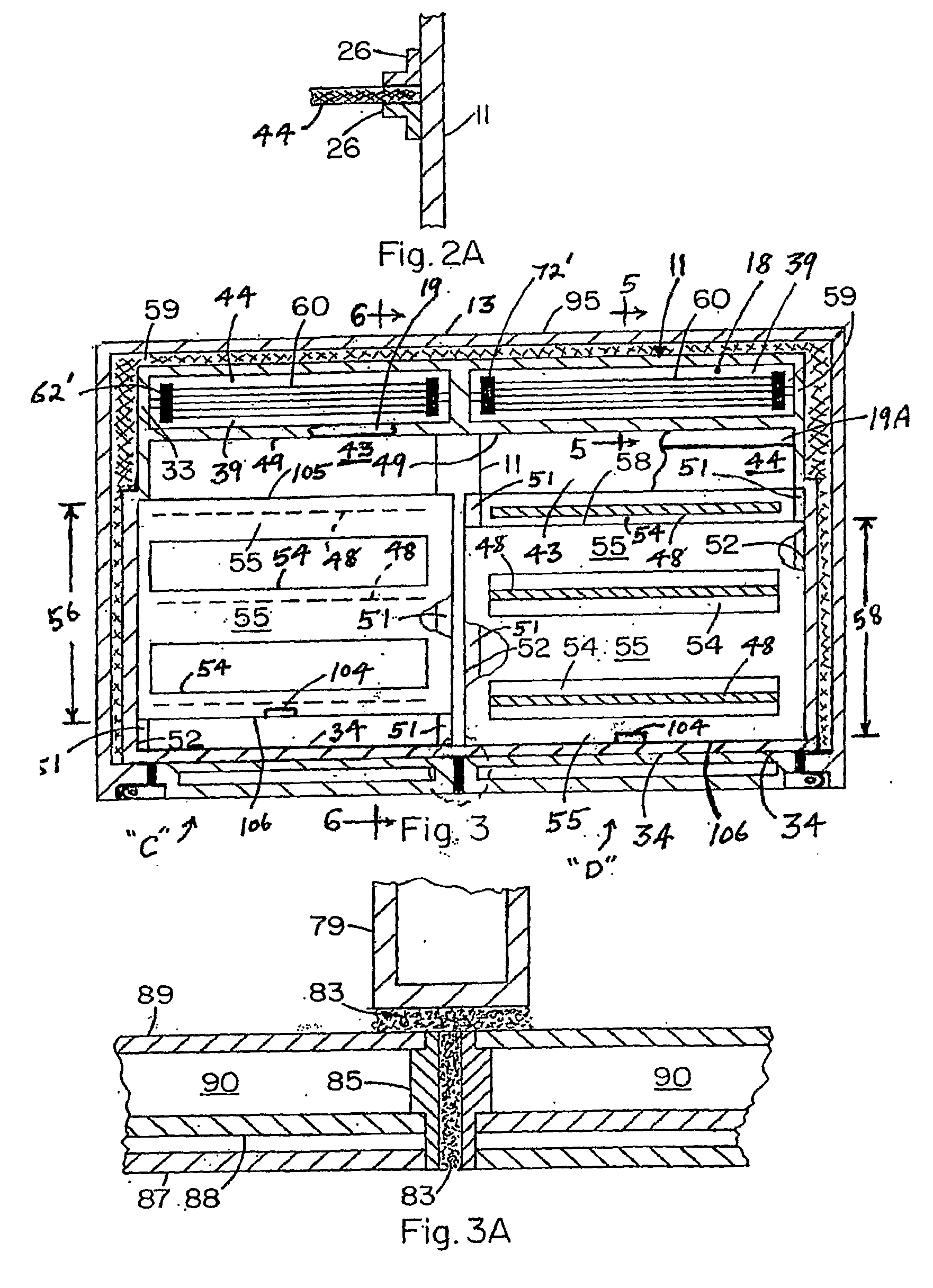Cooking oven
a convection oven and oven body technology, which is applied in the field of cooking ovens, can solve the problems of ineffective inability to heat up the oven, and inability to achieve simultaneous precision baking on multiple racks, so as to reduce the duty cycle, prevent the bottom burning of food products, and increase the duty cycle
- Summary
- Abstract
- Description
- Claims
- Application Information
AI Technical Summary
Benefits of technology
Problems solved by technology
Method used
Image
Examples
Embodiment Construction
[0030]Referring to the drawings which represent the preferred and best mode for practicing the present invention, the various wall structures are shown as monolithic, however, fabrication in sections of these structures in conventional manner can be employed. As shown, the present cooking oven structure comprises a single (FIG. 1) or side by side multiple ovens (FIGS. 2-10), wherein each oven comprises spaced inner 10 and outer 12 metal housings formed respectively by first wall means 11 and second wall means 13. First wall means 11 provides the structural elements of a ceiling 14, a floor 18, opposing side walls 22, 24, a back wall 30, and front wall portions 34 provided with a hinged access door 38.
[0031]For each oven, the combination of an upper heating cavity 45 communicating with a circulating air feed channel generally designated 39 is formed (for oven “C” see FIGS. 3 and 6) by side walls 22 and 24, back wall 30 and ceiling 14 of first wall means 11, by third wall means 41 hav...
PUM
 Login to View More
Login to View More Abstract
Description
Claims
Application Information
 Login to View More
Login to View More - R&D
- Intellectual Property
- Life Sciences
- Materials
- Tech Scout
- Unparalleled Data Quality
- Higher Quality Content
- 60% Fewer Hallucinations
Browse by: Latest US Patents, China's latest patents, Technical Efficacy Thesaurus, Application Domain, Technology Topic, Popular Technical Reports.
© 2025 PatSnap. All rights reserved.Legal|Privacy policy|Modern Slavery Act Transparency Statement|Sitemap|About US| Contact US: help@patsnap.com



